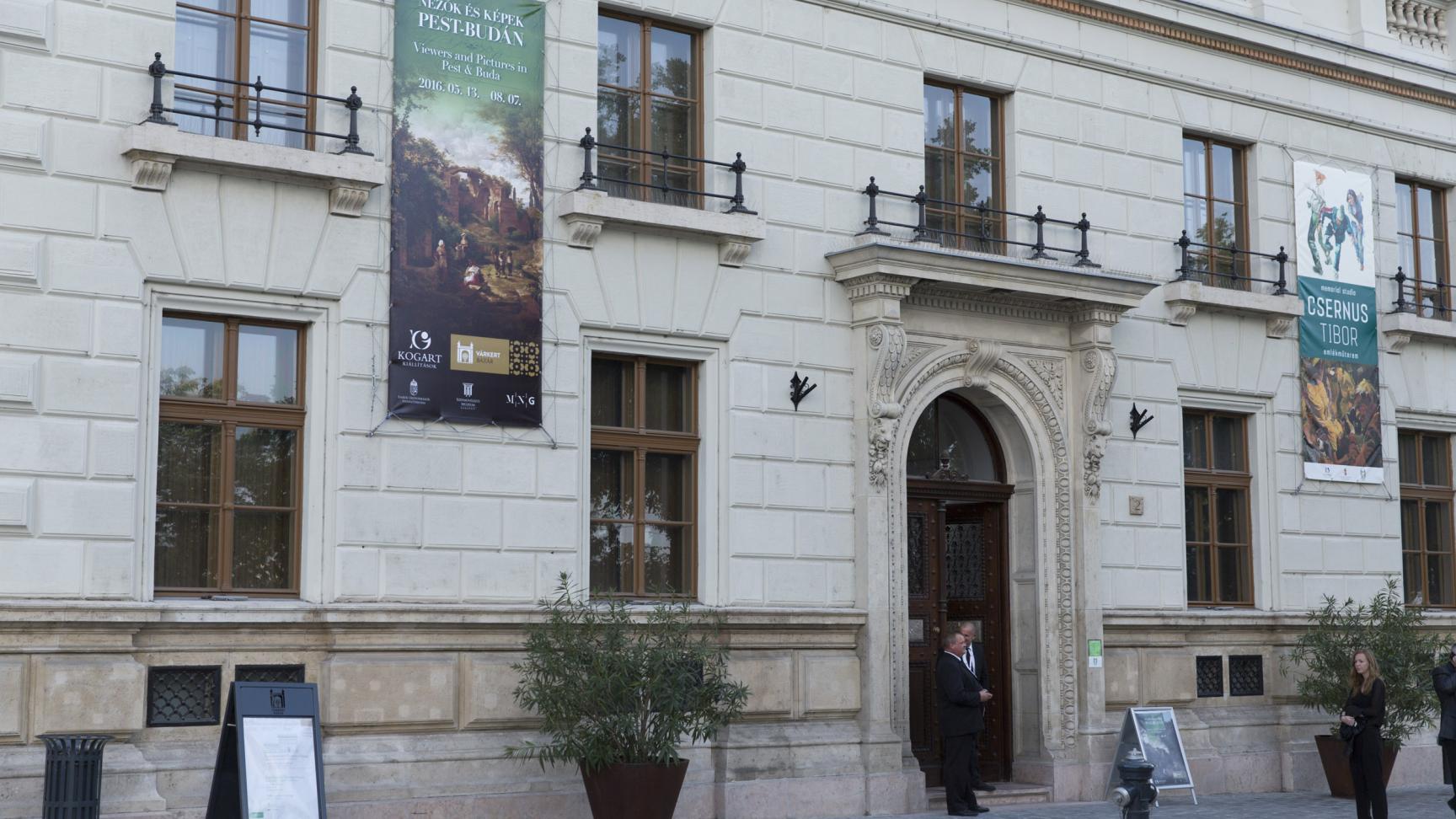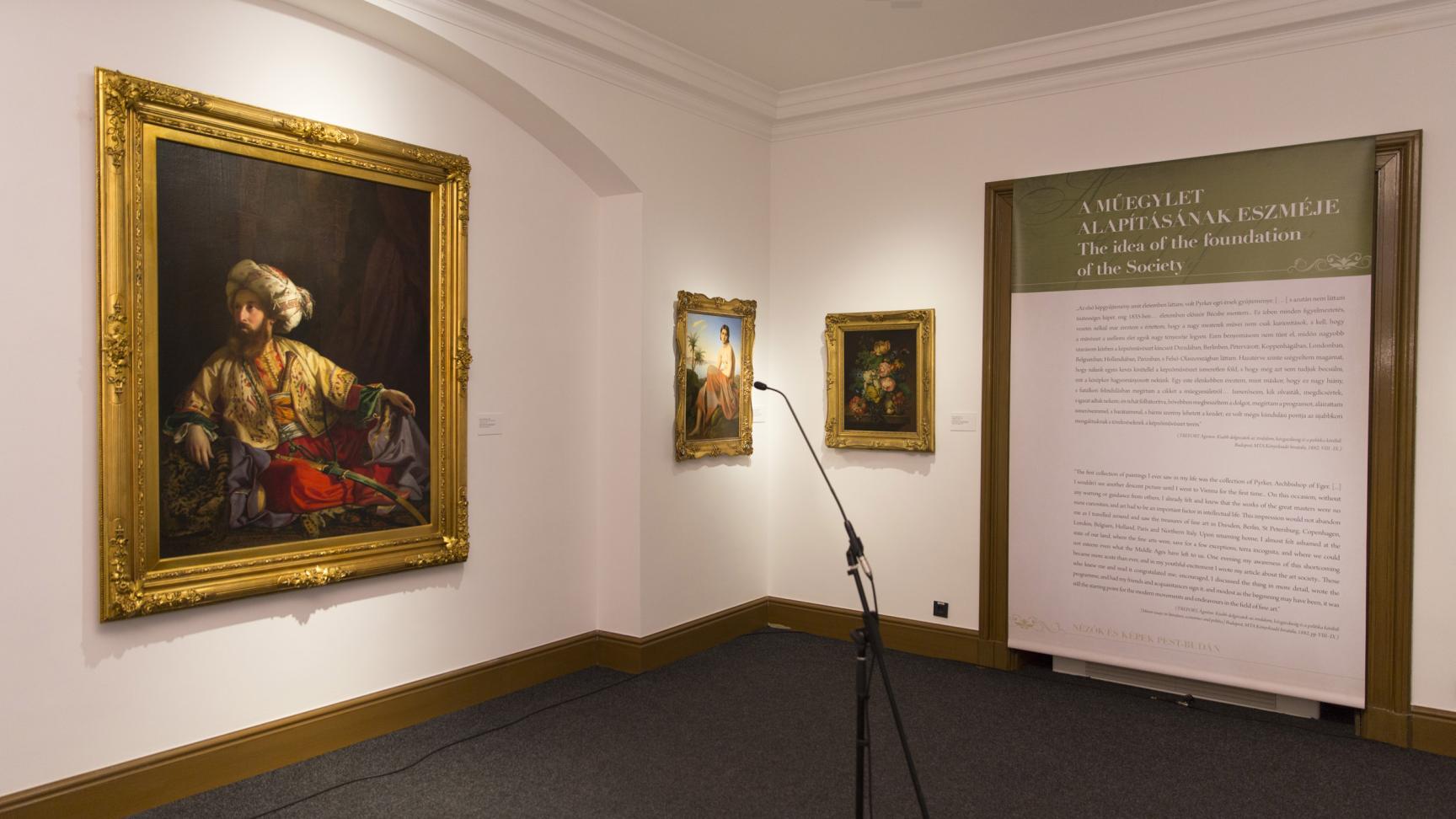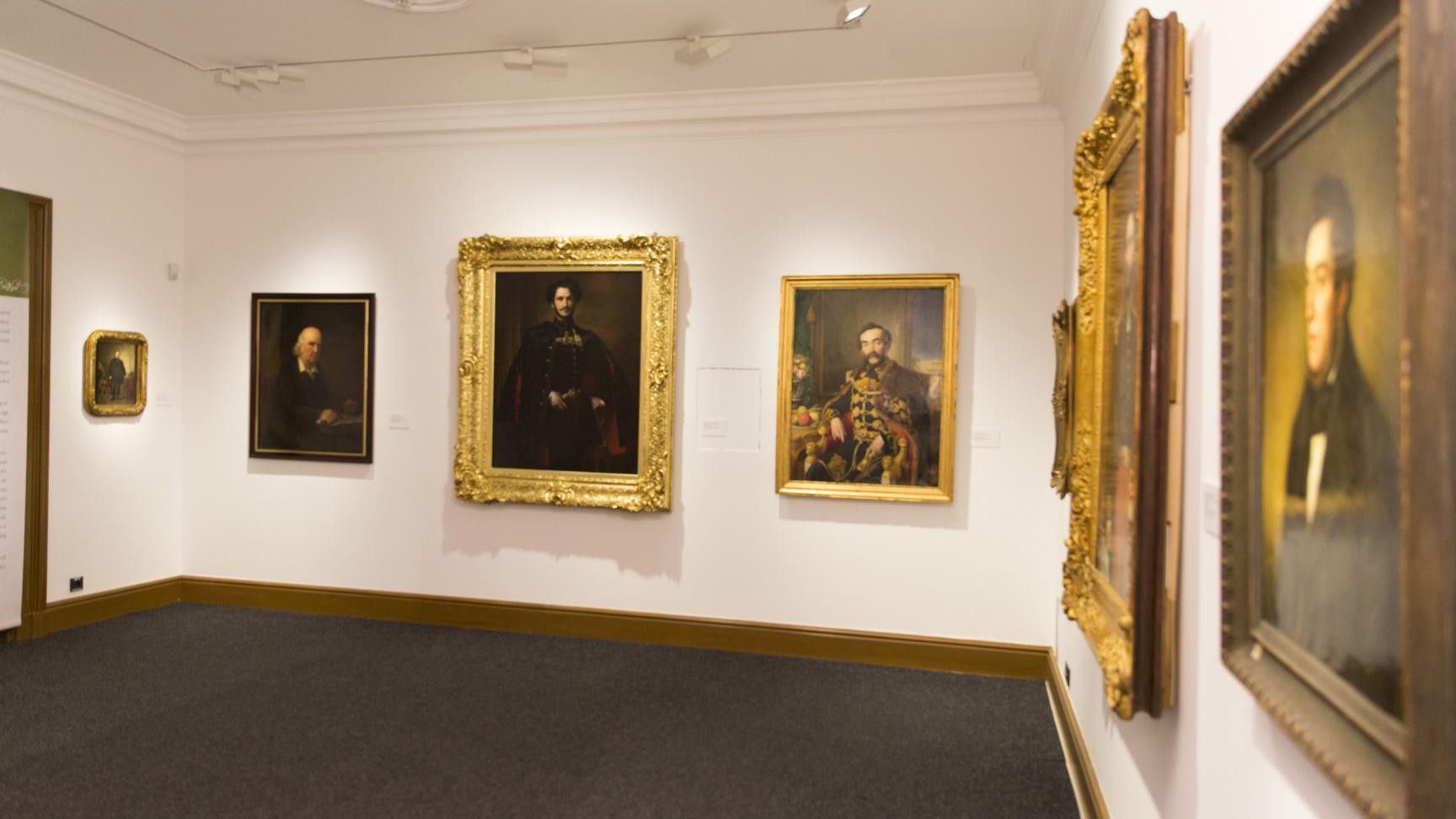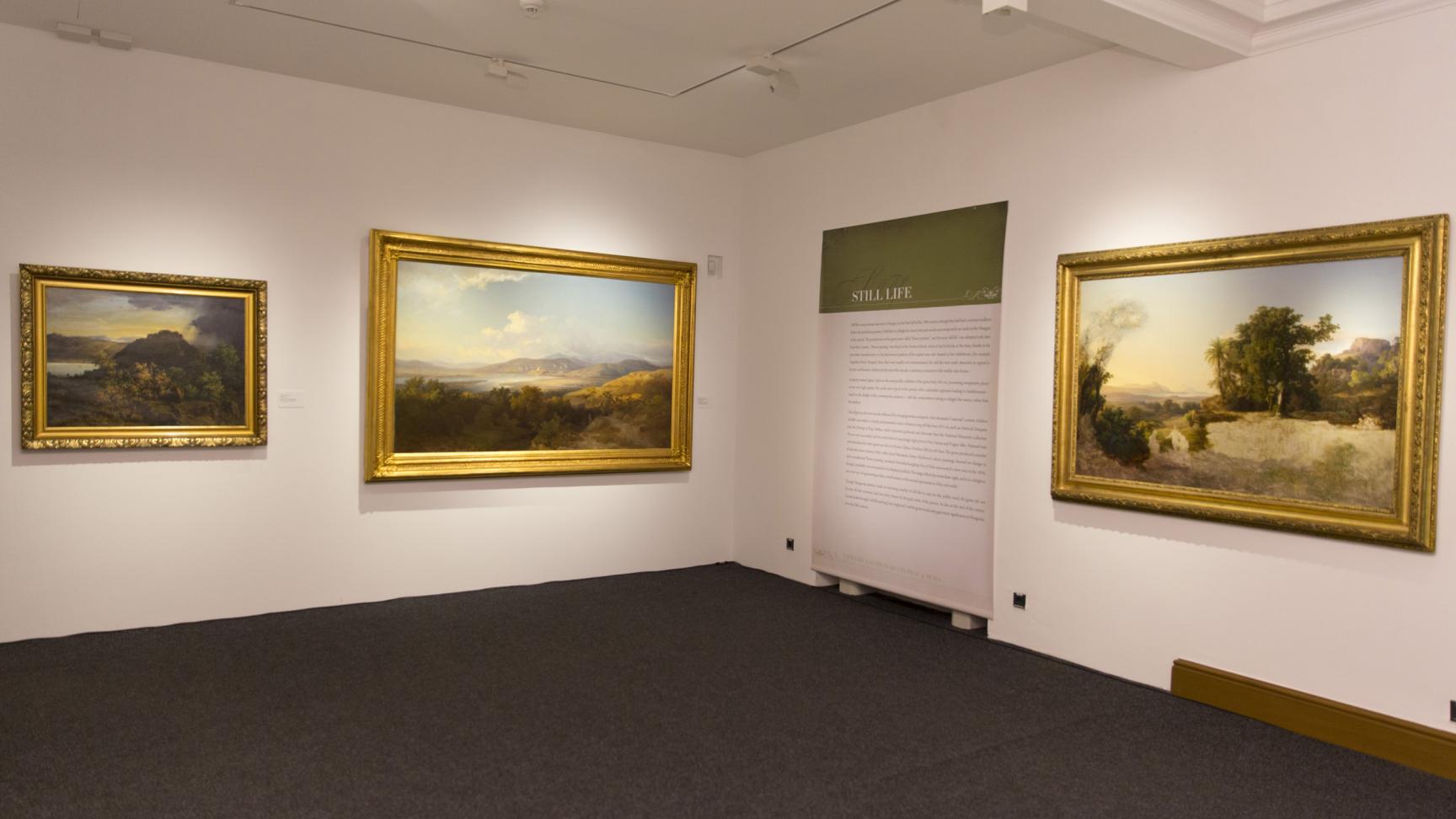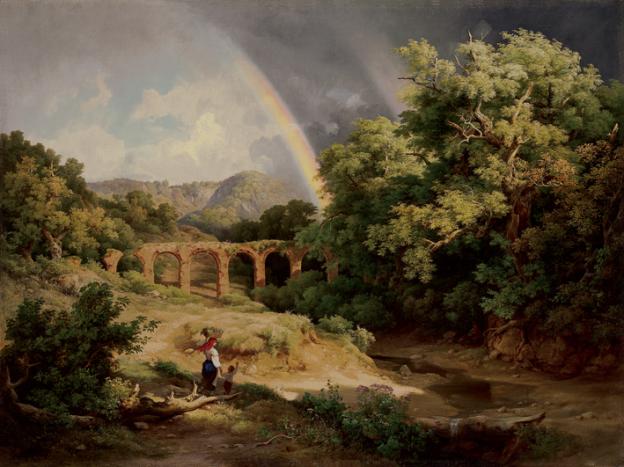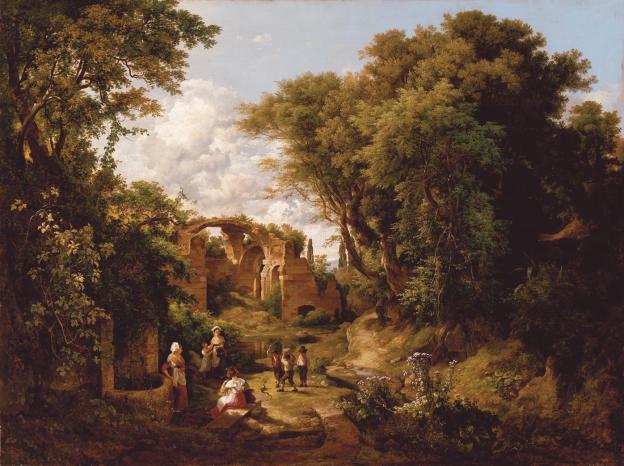Owing to the country’s inauspicious history, Hungarian visual art was very backward in the first half of the 19th century. There was no academy of art, no collections of painting or exhibitions of contemporary works, and trained artists were few and far between. As a consequence, it took a great deal of courage to organize the first exhibition of contemporary visual art in Hungary in May 1840. The first display presented over 300 domestic and foreign works, and was a real sensation because the public had not seem an event of its like. But for a few feeble initiatives, there had never been an exhibition of contemporary visual art in Hungary—something that was sorely missed by influential intellectuals.
The display was organized by a civil association, the Pest Art Society (Pesti Műegylet), which had been formed in 1839 with the intention of stimulating Hungarian art and training public taste. The society was founded by committed patriots, and became successful very soon, and as the only specialist institution of visual art, established the conditions for the emergence of an artistic life in Pest and Buda (which were still two cities).
Following the first, successful event, the Pest Art Society presented exhibitions for 25 years (annually during the Reform Period, and then monthly from 1853), creating what were at the time the sole forums of Hungarian art. Several of the exhibits, the works of Hungarian and foreign artists, have survived, and are now held in diverse museums and private collections, but it is impossible to reconstruct completely any of the displays. Many of the major works, however, have been identified and some of them are now presented at this exhibition (along with a few interesting works of lower calibre): most of them are still in the core collections of Hungarian institutions, as they were usually donated to museums immediately after the exhibitions, by the Society, individuals, or civil associations.The exhibitions were accompanied by catalogues and books, which also served as advertisements.
